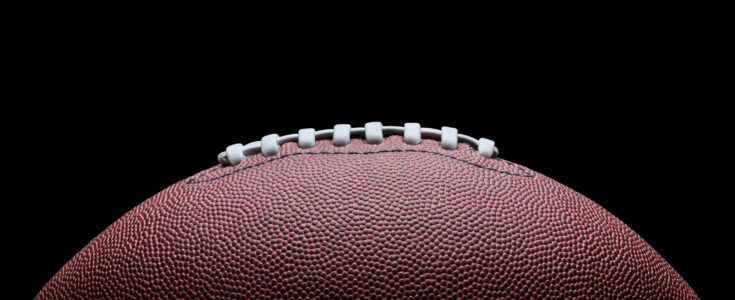

A chip shot is normally a golfing term, but as of this season, it is going to take on a very particular meaning in the NFL too. This year’s preseason games will use microchips embedded in the footballs to help assess whether the uprights are correctly spaced or if they should be narrower. If the trial is a success, the balls could continue to be used in the Thursday night football regular season games and the data mined could change the sport forever.
I can immediately think of three groups who stand to benefit from microchipped balls. Firstly, the fans are going to ultimately get a more exciting game, especially if the uprights are changed, but even if not, because of previously unseen insights from the data. Secondly, if the NFL makes it harder to score goals, kickers stand to gain more kudos and command bigger fees as a result, like Justin Tucker and his recent $16.8 million deal. Thirdly, trials on this scale will advance our understanding of the practicalities and the potential of a connected sporting world. For someone like me, working in IoT and mobility application development, there’s an extra reason to watch the NFL this year.
Unlike more traditional application development and testing, IoT development and testing is a lot more varied and…well…messy. If you walked into one of our test centers, you wouldn’t instantly know whether the app being tested enabled the user to play a game, go shopping or manage their accounts, even though these three activities are all quite different. But when it comes to chips inside everyday objects, the development, test and measurement processes need to step up to the challenge in a totally new way. We need ways of recreating real world scenarios that capture all the different factors that might affect the object’s performance, whether we’re talking connected cars, NFL balls or any of the six billion objects that Gartner estimates will be connected by 2018.
Bringing the real world into the lab environment means getting your hands dirty and working up a sweat! At Apexon we have a dedicated sports lab that can track the movement of a ball or its impact on a bat. But at its most basic, it still needs an actual person to throw or hit or kick that ball many times over in order to start building up the data we need to continue development, test and automation in the more usual desktop setting.
It’s the data that brings us back to why next season will be such a game-changer for the NFL. We just don’t know what the conclusions will be. I’m sure the balls have been tested to withstand impact and transmit readings, but how that data directs the future of the game is anyone’s guess. The short-term goal is to evaluate if the uprights need adjustment. However, I can’t help but see this as the dawn of a new era of connectedness in sport.
If you have a sports development query, contact us for more information.
There are many drivers powering the surge in enterprise IoT initiatives. Improved business efficiency ranks among the highest, but better decision-making, improved customer...
For those working in the field of connected device hardware and software design, this week’s IoT Tech Expo North America event promises to be a feast for the senses. Or should...
One of the most exciting areas in tech right now promises to be “the most personal” ever. A key aspect of making wearable devices like the Apple Watch personal is through...